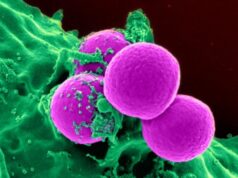Cedars-Sinai scientists are seeking to build an improved stem-cell model of amyotrophic lateral sclerosis (ALS) to accelerate progress toward a cure for the devastating neurological disorder. Their findings demonstrate that current models can be enhanced by the aging of motor neurons to show how ALS damages cells later in life.
ALS, also known as Lou Gehrig’s disease, affects more than 12,000 people in the U.S., according to the National Institutes of Health. It typically strikes between the ages of 40 and 70, according to the ALS Association. There are no effective treatments, and most patients suffer paralysis and die within five years of diagnosis.
To understand ALS, researchers at the Cedars-Sinai Board of Governors Regenerative Medicine Institute are creating induced pluripotent stem cells (iPSCs) derived from patients’ skin cells. By altering several genes in patients’ cells, the investigators can return these cells to their embryonic, or stem-cell, state. These specially engineered stem cells reproduce indefinitely in laboratory dishes, where their abnormalities and processes can be examined in detail. In the case of ALS, these cells are used to grow spinal motor neurons and study them.
A multi-center team led by Clive Svendsen, PhD, and Ritchie Ho, PhD, has found that iPSC versions of spinal motor neurons typically used to model ALS resemble immature or fetal neurons more than mature adult neurons in adults affected by the disease. In a detailed analysis of large sets of genes, the investigators also showed how ALS may impact neurons as they mature and exacerbate age-related changes.
Taken together, the findings suggest that investigators need to devise ways to alter iPSC versions of spinal motor neurons to more closely resemble older versions found in adult ALS patients, the scientists said. “Using motor neurons to model neurological disease may require their aging in a dish,” said Ho, the first author of an article on the study, published online July 18 in the journal Nature Neuroscience.
To help researchers tackle the task of aging the stem cells, the group identified a series of genetic markers to assess cell maturity and age.
Find your dream job in the space industry. Check our Space Job Board »
“By knowing the gene expression patterns that define adult motor neurons in the spinal cord, we can push the iPSC-derived motor neurons in the right direction in the petri dish,” said Svendsen, director of the Cedars-Sinai Board of Governors Regenerative Medicine Institute and professor of Medicine and Biomedical Sciences. Svendsen was the senior author of the article.
Source: Cedars-Sinai Medical Center
Journal: Nature Neuroscience
Research Reference:
- ALS disrupts spinal motor neuron maturation and aging pathways within gene co-expression networks, DOI: 10.1038/nn.4345










